How to Perform a Thorough Home Inspection: EXTERIOR, part 2
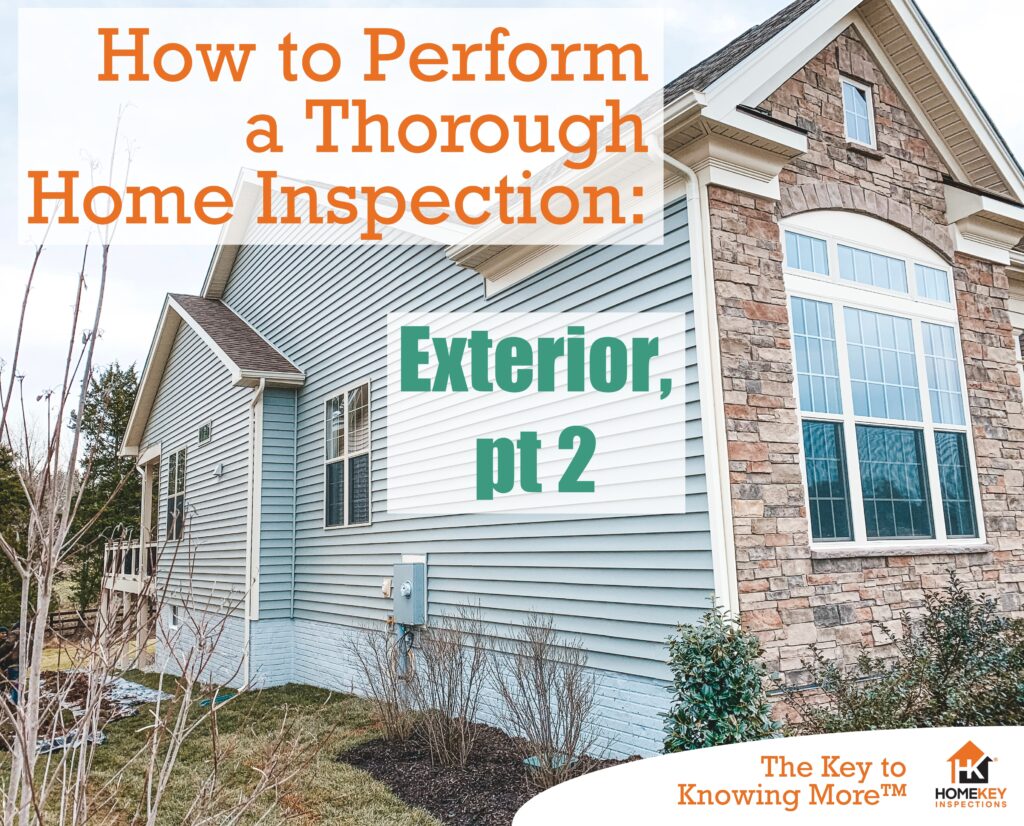
In this part 2, we’ll be focusing more on some of the concrete and common things you’ll find during the exterior portion of a home inspection. For you curious homeowners out there–why not grab a notepad and use this post to check a few of these items yourself?
Warning: You may be making a long list of “to do” items for yourself in the process 😉
Grading / water management
Take a look at the grading. Does the ground appear to slope away from the home or is it flat (or worse, sloping towards the house)? Any evidence of soil erosion? Where are the downspouts putting rainwater? If you have underground downspout extensions, do you know where they daylight / terminate? Is there a sump pump discharge and is it carrying the water away from the home (or is it instead depositing the water right back at the foundation wall and forcing the system to work harder)? Effective water management is one of the most important concerns of any homeowner, and if grading and drainage is done well on the exterior, a home is spared a lot of more expensive and involved problems!
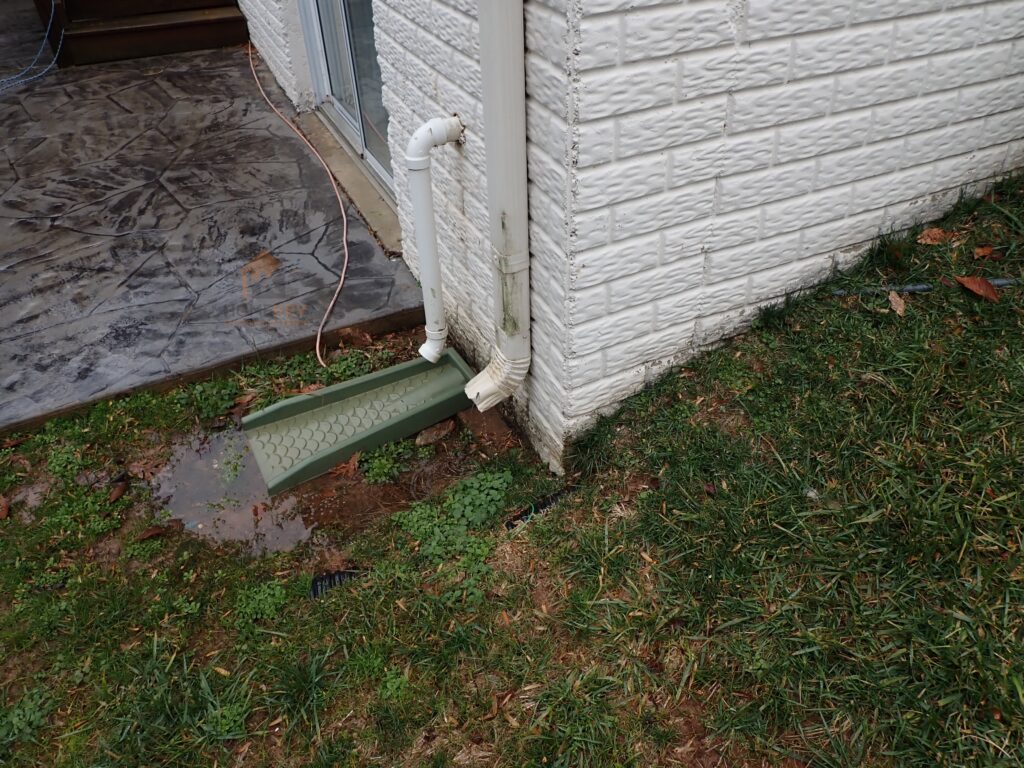
Driveway
What’s the condition of the driveway? Is it deteriorated and in need of being sealed? Are tree roots an issue? If the driveway is sloping into the garage, how will the water be managed?
Exterior wall penetrations
Take a look at the penetrations on all sides of your home–vents, electrical receptacles, pipes, etc. Are they properly sealed to prevent water intrusion into the home? Any birds nesting in dryer vent openings? Check every hose bib for leaking, whether it’s installed securely, whether it has a vacuum breaker installed. If it’s been winterized, note that. And make sure you check for water pressure here (if hose bibs are winterized you can usually check water pressure at the water heater instead). Is the home water pressure within the proper range (40-80 PSI)? Both over and under pressure can be problematic for different reasons. If the pressure is too high, a pressure regulator may need to be installed (if not already installed), which is a job for a qualified plumber (our inspectors often note excessively high pressure as a Major concern, since the cost of installing a pressure regulator–where not already present–can approach or exceed $1,000).
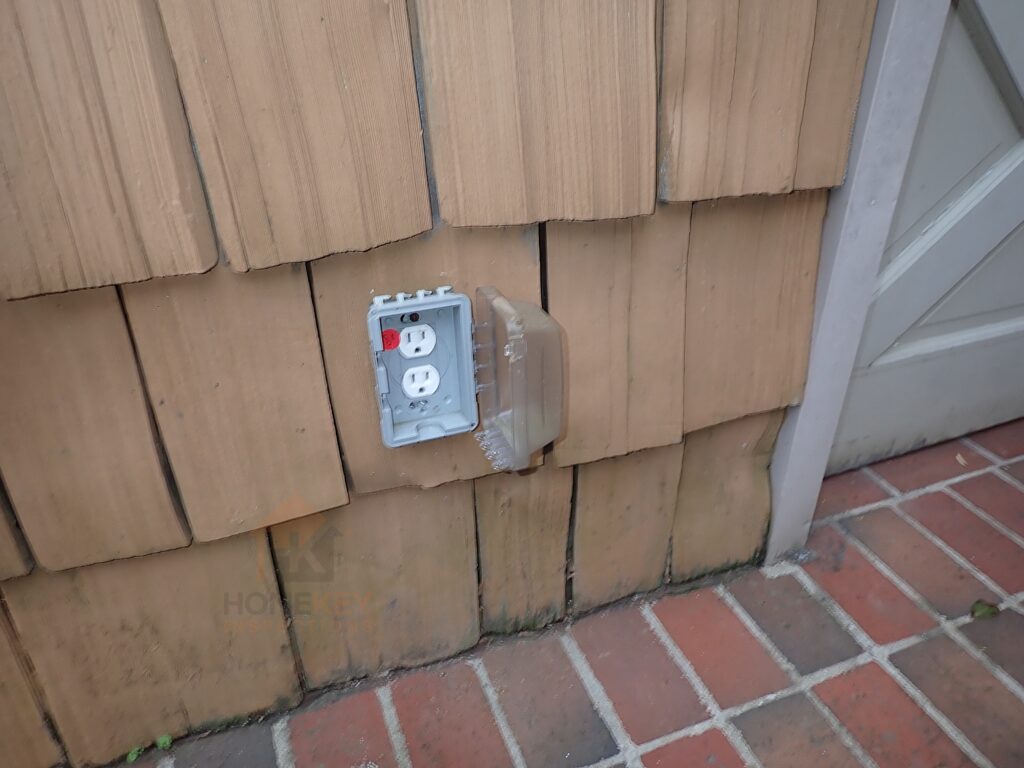
Electrical components, GFCI
As you’re looking at penetrations, be paying attention to electrical system components. Check every outlet for power, and check for GFCI protection on all exterior outlets. For more information on what GFCI protection is, check out “5 Household Dangers You May Not Be Aware Of”.
As home inspectors, if we find electrical outlets on the outside of the home that are not GFCI-protected, we report that as a Major concern, since it is a safety hazard! One important note regarding GFCIs: If the home is occupied, when you test the exterior GFCI the power to anything on that circuit will be cut off. Make sure you make an effort to reset the ripped GFCI outlet / breaker! One time I (the author), forgot to reset the tripped breaker, and as a result all the meat in a garage freezer went bad! I made sure to make it right, but it didn’t feel good to lose a chunk of my inspection fee to do so. 😉
Other electrical items to be looking for include: missing conduit where needed (e.g. where cables travel underground); loose light fixtures or mounting blocks missing / incorrectly sized; and any electrical main or sub panels that may be located outside. And how is the home’s electrical system grounded?? If the home is newer, it’s likely a UFER system is accomplishing the grounding of the electrical system. On older homes there’s often (or there should be) a ground rod buried in the earth near the home (typically near the electric meter). If you can’t spot what is grounding your electrical system, take note of it and see if you can’t locate it inside the home.
Stairs, walkway, rails issues
As you’re walking around the home, be sure to note any potential trip / fall hazards. Some examples of common finds:
- Step heights and tread depths not uniform / consistent in height, or steps too high
- Missing / loose hand/guard rails (see photo)
- Large gaps observed between guard / hand rail balusters (a danger for small children to get heads stuck)
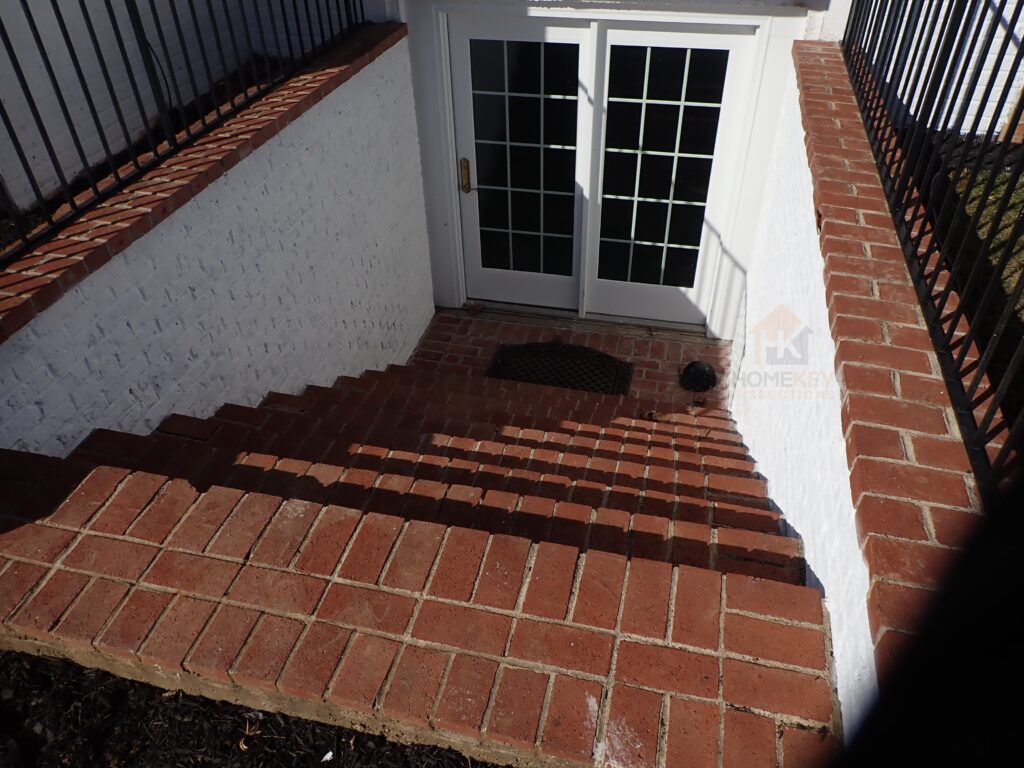
Fuel and HVAC components
Does the home have gas? Public or private (is there a gas meter, or a propane tank)? In some areas it’s not uncommon to find oil tanks (above ground or buried). Note these things and include photo and location of main shut-offs. Use your nose to try and notice any gas leaks (if you find one, make a point to tell the client’s agent right away so they can notify the homeowner…in many cases during an inspection of mine the gas company has come out while I was still finishing my inspection to fix the leak!). A gas leak detector is an incredibly useful tool here so you’re not just relying on your sense of smell, and you can try and pinpoint the location of the leak.
Note ages of condensing units or heat pumps, and if they are running, feel the insulated refrigerant line to feel whether it’s sufficiently hot or cold (depending on season). Check for the condition of the units and for proper clearance from grade (heat pumps need taller “snow legs” than condensing units).
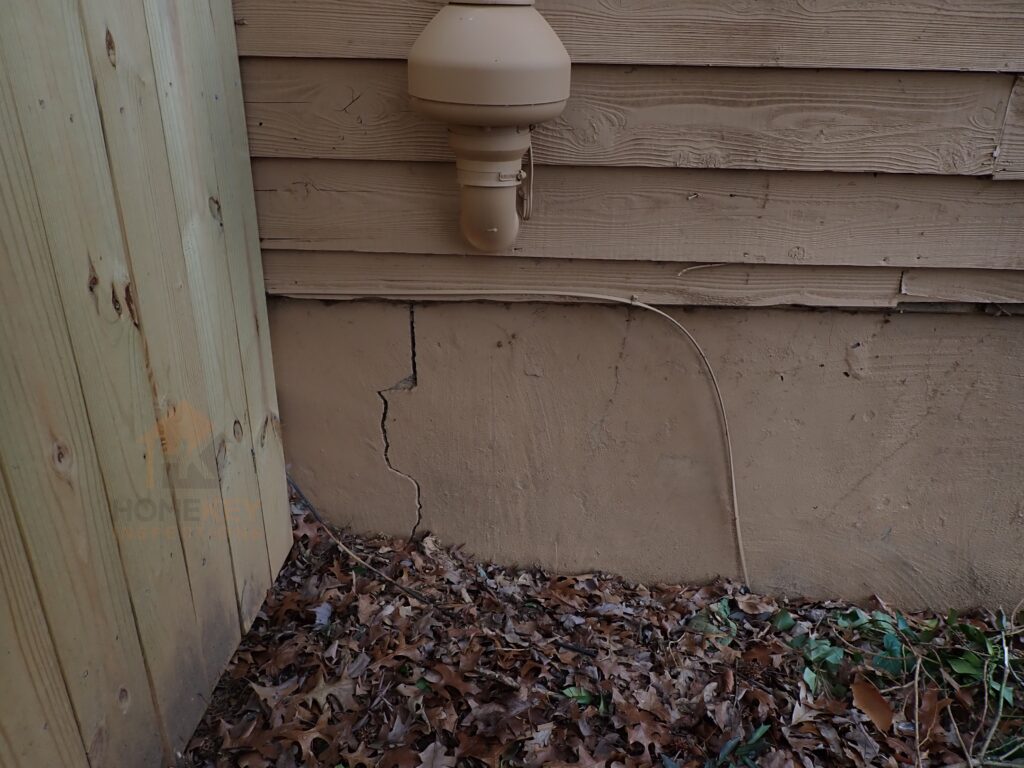
Foundation walls, window wells, emergency egress
Typically most of the foundation inspection will happen later on in the inspection, but don’t forget to begin inspecting the foundation wherever it’s visible on the exterior. If you come across a crack 1/4″ in width or greater, consider that a Major concern, and recommend further evaluation by a structural engineer or other qualified professional.

If the home has window wells, can you see a means of drainage (it’s not always visible)? Note if the well seems to be excessively blocked / obstructed with debris–this could lead to water intrusion even if there is drainage inside the window well, as it will be kept from draining properly.
In some cases, a partially-below-ground window is acting as emergency egress for a basement bedroom. In these cases, is there a proper ladder installed, and is it secured to the well itself so it cannot be removed?
For you homeowners: If you went around your house to check some of these items yourself…how did your home do?
For you home inspectors: Remember, this post does not exhaustively cover all the items to inspect on the exterior. Are these all things you’re looking for?
We’ll save the rest of the Exterior inspection for Part 3. In my (the author’s) experience, the exterior inspection often took nearly a third of the time of the entire inspection (and sometimes about half the total photos!)…so it deserves several posts! 🙂
